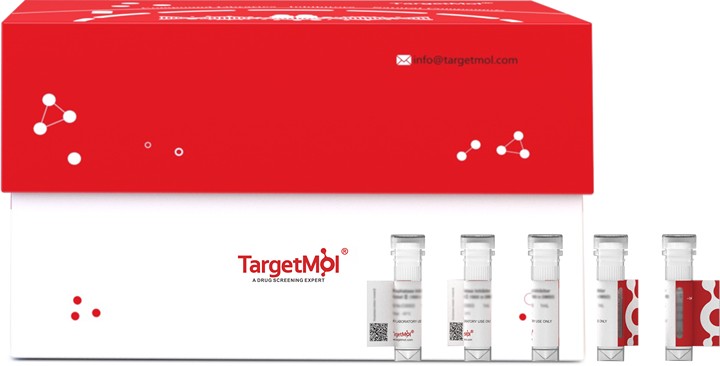
STAT1 Protein, Human, Recombinant (His & GST)
TMPY-02240
Molecular Weight111 kDa (predicted); 105 kDa (reducing conditions)
Product group Chemicals
Overview
- SupplierTargetMol Chemicals
- Product NameSTAT1 Protein, Human, Recombinant (His & GST)
- Delivery Days Customer16
- CertificationResearch Use Only
- Molecular Weight111 kDa (predicted); 105 kDa (reducing conditions)
- Scientific DescriptionSTAT1 is a member of the STAT protein family. In response to cytokines and growth factors, STAT family members are phosphorylated by the receptor-associated kinases, and then form homo- or heterodimers that translocate to the cell nucleus where they act as transcription activators. STAT1 can be activated by various ligands, including interferon-alpha, interferon-gamma, EGF, PDGF and IL6. It is a signal transducer and transcription activator that mediates cellular responses to interferons (IFNs), cytokine KITLG/SCF and other cytokines and growth factors. The phosphorylated STATs dimerize, associate with ISGF3G/IRF-9 to form a complex termed ISGF3 transcription factor, that enters the nucleus. ISGF3 binds to the IFN stimulated response element (ISRE) to activate the transcription of interferon-stimulated genes, which drive the cell in an antiviral state. In response to type II IFN (IFN-gamma), STAT1 is tyrosine- and serine-phosphorylated. It then forms a homodimer termed IFN-gamma-activated factor (GAF), migrates into the nucleus and binds to the IFN gamma activated sequence (GAS) to drive the expression of the target genes, inducing a cellular antiviral state. STAT1 becomes activated in response to KITLG/SCF and KIT signaling and may mediate cellular responses to activated FGFR1, FGFR2, FGFR3 and FGFR4. Defects in STAT1 can cause STAT1 deficiency complete and familial candidiasis type 7.
- Storage Instruction-20°C
- UNSPSC12352200
